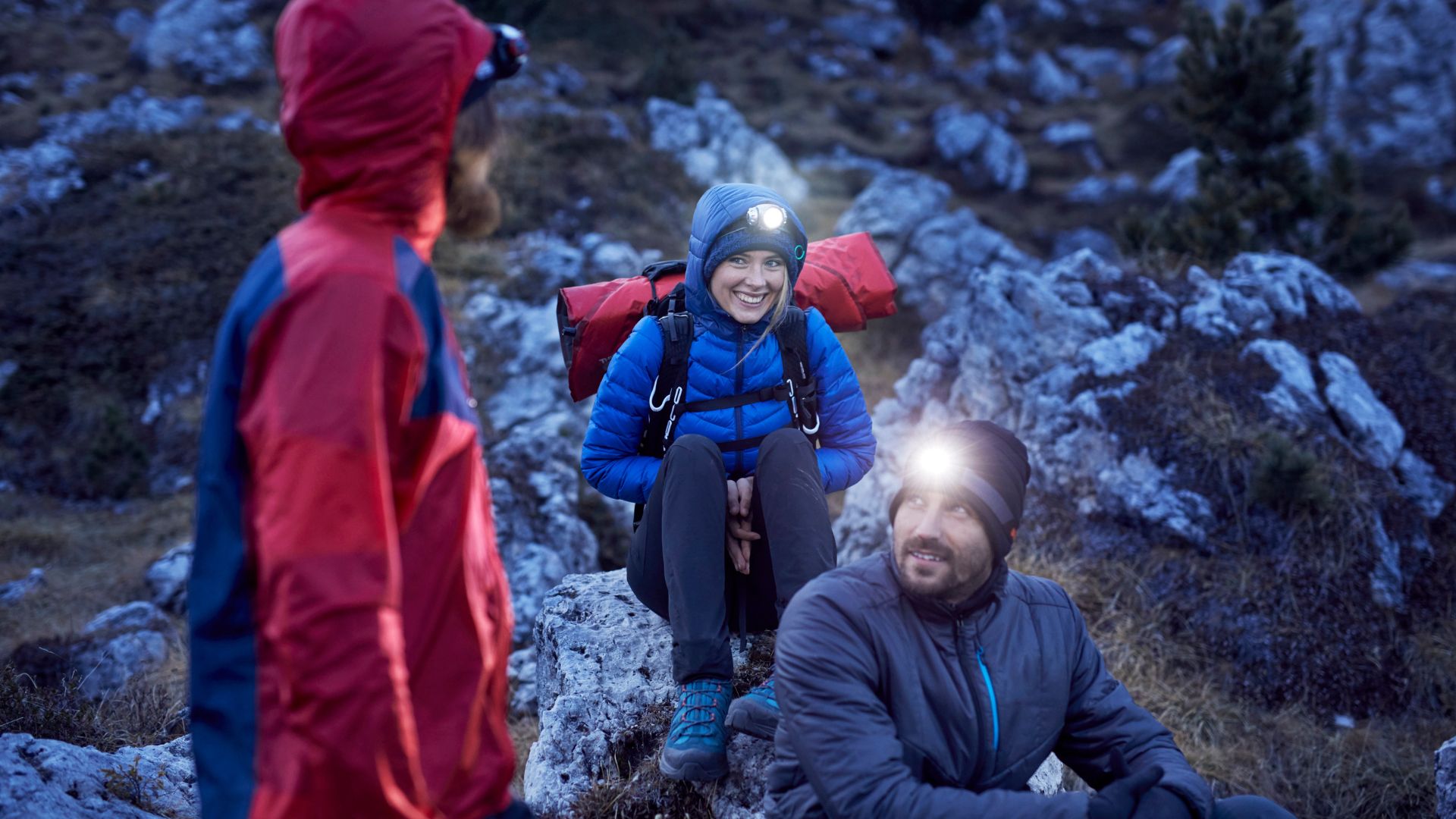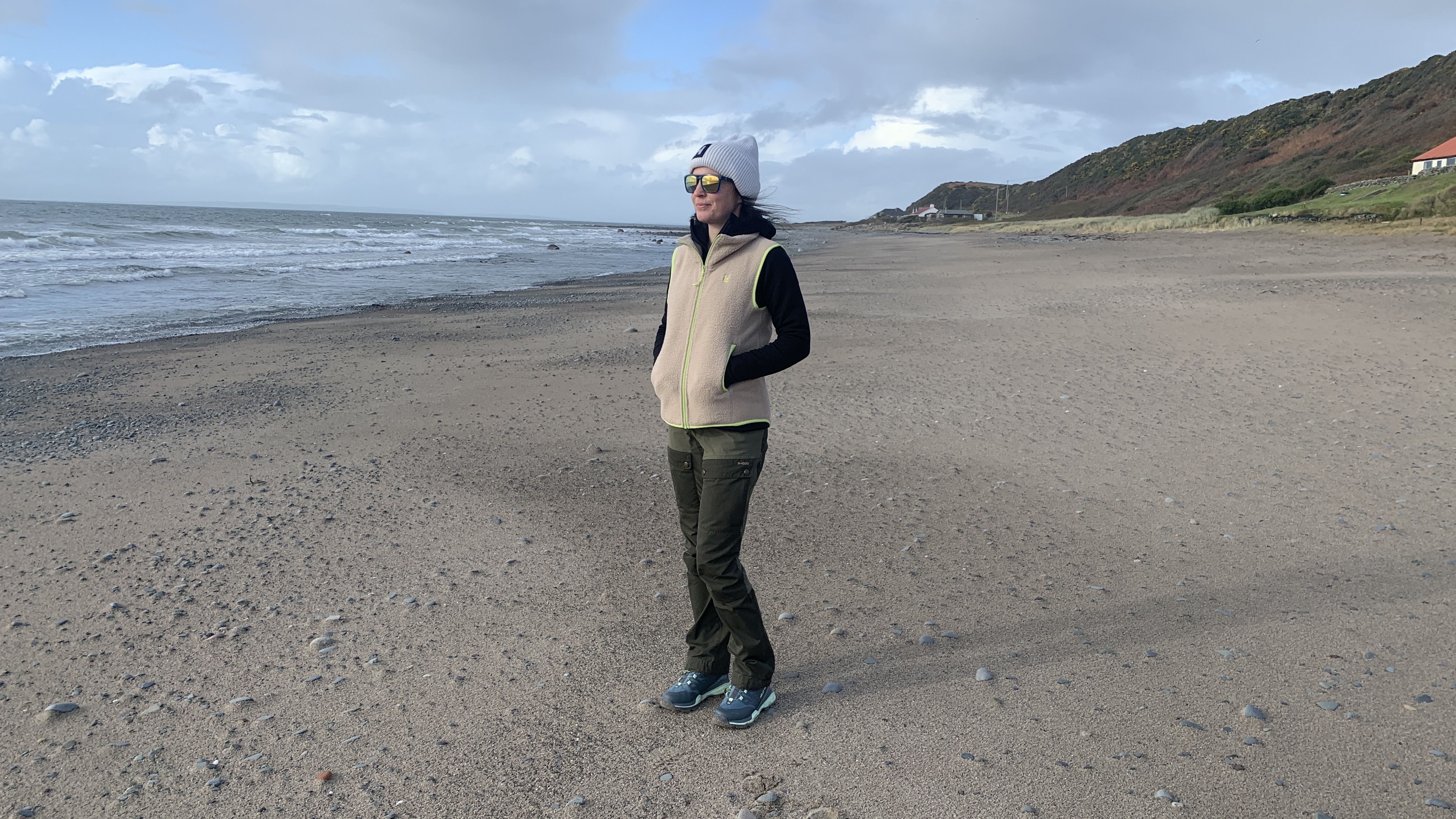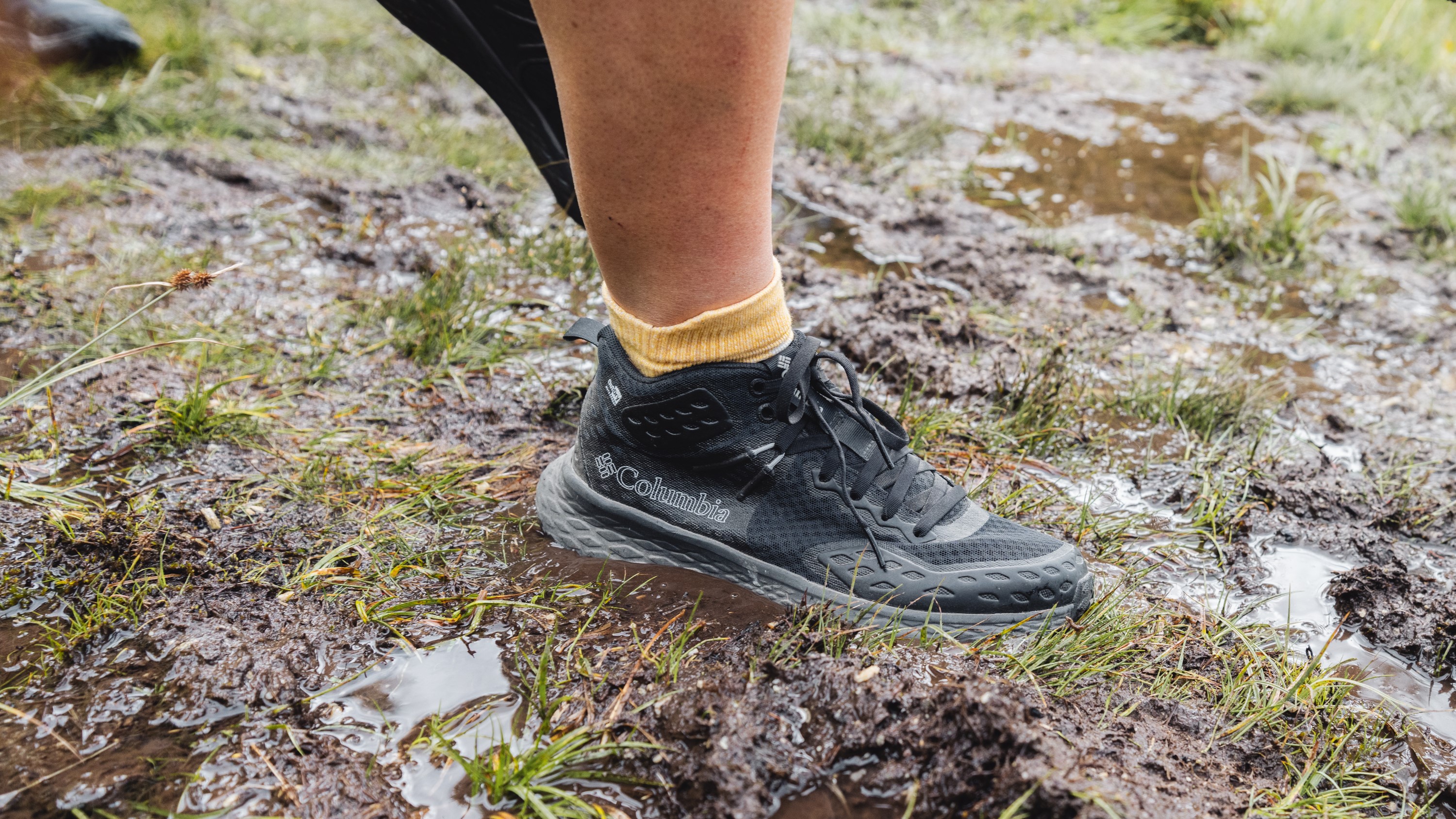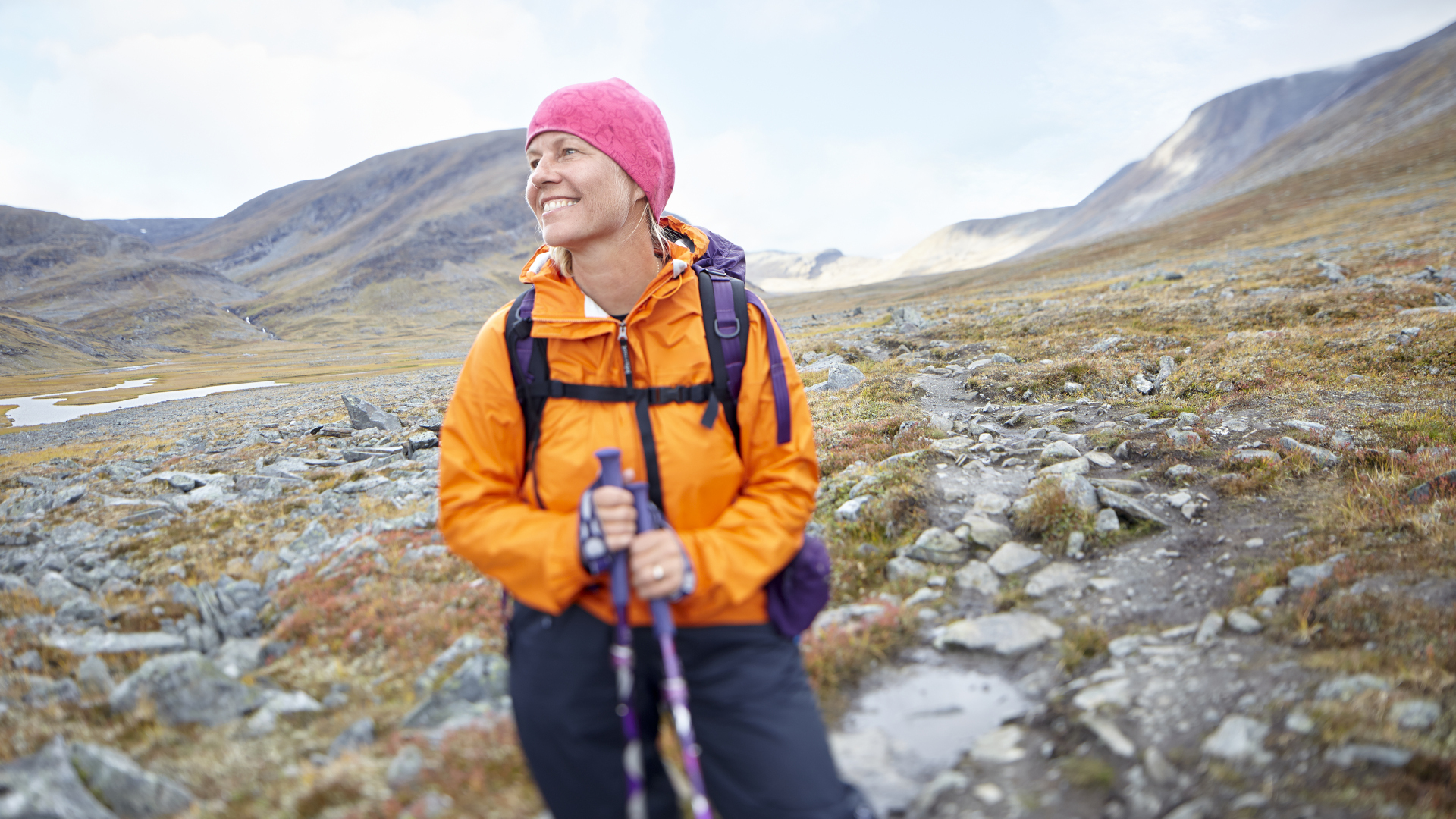
Whether you’ve recently stepped outside and realized that morning dew on the grass was actually frost or had a whiff of pumpkin spice as you pass the local coffee shop, you’ve probably realized that no matter how you feel about it, fall is on the way.
Though I love the long days and warm weather of summer, I can’t deny that I’m a bit of a sucker for fall. The crisp air is perfect for vigorous uphills, the turning leaves transform the landscape into a golden paradise and I can start pulling out my favorite mid layers that have been largely neglected for months.
This year, the first day of fall is coming up on September 22, otherwise known as the autumnal equinox. From then on, you can expect to have to approach your trail adventures a little differently. Want to know more? Here are our top five tips for hiking in the fall:
1. We’re losing light
Though the days have been getting shorter since the summer solstice back in June, you’ll really start to notice it now as the darkness starts to actually encroach on your hiking time.
From now until the winter solstice in December, sunset will come in sooner and sunrise will arrive a little later each morning. That means you might need to set off a little earlier on your hikes to make sure you’re not getting back to the trailhead in the dark or plan on shorter hikes. Regardless of your approach, make sure you pack a hiking headlamp with backup batteries.
I always carry my Petzl Actik Core headlamp which is comfortable to wear over a long time, allows me to see up to 100 meters down the trail and has a red light function so my eyes can adjust to the dark if I want to do some stargazing or use the moonlight to guide me.
Don't forget that once the clocks change, mornings will be a little lighter but you'll need to be extra careful about being out on the trail in the late afternoon.

2. Layers are more important than ever
Yes, we’re always going on about dressing in hiking layers in any season, but we can’t deny that many of us hike in a cotton tank top quite happily all summer long and never actually need that fleece or rain jacket.
Fall brings unpredictability in the weather, often swinging between sweltering middays and teeth-chattering early mornings and evenings – this effect becomes more extreme the higher you climb in elevation.
No matter what the air temperature feels like when you set off, make sure you’re prepared for wild temperature swings and wear or pack an insulating layer such as a down jacket plus a waterproof jacket to fend off rain and wind.
I personally wear a wool base layer for any fall hike and love my Montane Fireball Lite hoodie for a little more warmth at this time of year. If that feels like too much, my BAM Bamboo 73 Zero Fleece Gilet keeps my core warm but not my arms, so I’m worried about overheating.
To top it all off, I usually bring my Montane Phase Lite waterproof jacket along, which packs down small but provides ample protection against wind and rain if the weather turns.

3. The trails are starting to get tricky
The good news is that the trails in the fall are nowhere near as messy as they are in the spring, when melting snow turns everything into a mud bath, but that’s not to say that you won’t encounter some mud or other challenges.
Depending on the climate and recent weather where you’re hiking, the trails could be bone dry, wet, muddy or even starting to get a little icy. The smart approach is to always wear proper hiking boots or shoes with good traction. I’m a big fan of hiking in trainer-style shoes such as my Columbia Konos TRS Outdry hiking shoes during the summer, but come the cooler weather I switch back to boots and bring something more rugged like my Hanwag Makra Treks.
You’ll want to do a little research if you’re hiking on a new trail – I like to use AllTrails+ to read up on current conditions reported by recent hikers. In areas where there may be early snow, opt for south-facing trails which see more sunlight. If you’re going up into higher elevations and there’s been a lot of precipitation, consider also carrying traction devices such as a Yaktrax or Microspikes and use trekking poles to help you with balance.

4. It’s hunting season
Hunting season varies by location, but if you’re hiking in the US right now, there’s a good chance that you could end up in the crosshairs of a hunter, quite literally, and you don’t want them to mistake you for an elk or deer. Do some research into hunting permit dates in your area and if hunting is allowed, stick to busier trails, hike during daylight hours and above all else, dress in bright colors.
You can get a special orange safety vest from Walmart to wear over your jacket if your entire hiking wardrobe consists of dark colors and neutrals, or just pick out bright-colored clothing. I like to wear my red Montane Protium Lite Pull On fleece which keeps me warm and visible, my yellow Helly Hansen Logo Cuff Beanie and orange Helly Hansen Transistor Backpack.

5. Wildlife is on the move
Fall isn’t just about leaf peeping – there could be some amazing wildlife viewing on your hikes, too. From bugling elk to busy beavers and feasting bears, there’s lots to see and be aware of on your hikes.
Find out what kind of wildlife to expect in your area and make sure you’re clear on wildlife safety first and foremost. Next up, bring your binoculars along so that if you do come across a moose or bighorn sheep on your travels, you can enjoy it from a distance and stay out of danger.
I usually bring my Whitby Gear 8X42 monocular along on fall hikes, as it’s powerful enough to zoom in but doesn’t take up too much space in my daypack.







